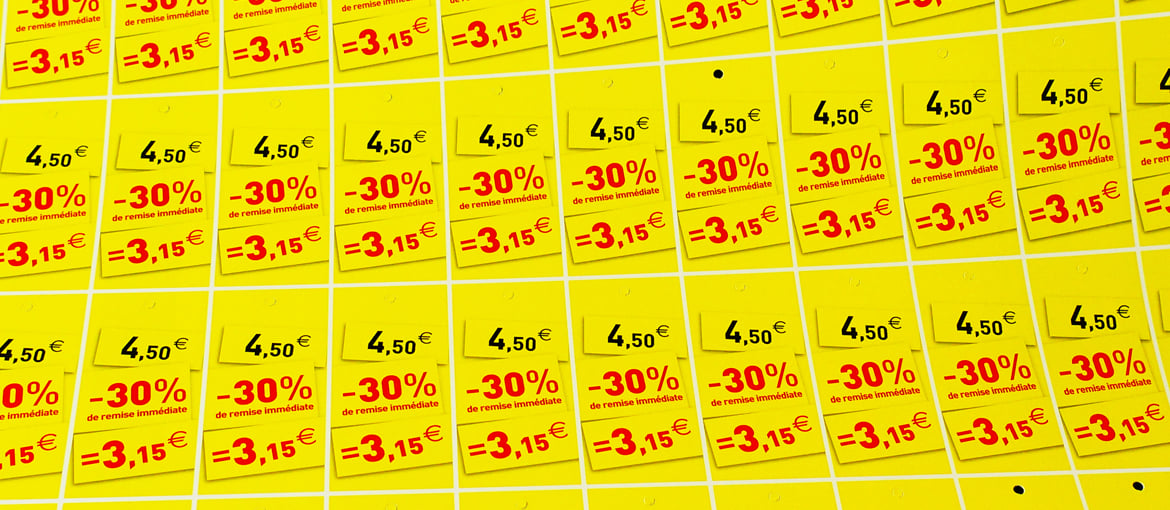Nesting, as it’s called in industry jargon, is the layout strategy that allows printers to organise the shapes of products to be cut out by nesting them in one another so as to optimise the use of space on the sheet.
Remember good old Tetris? Well, it’s the same sort of idea: you try to fit as many products to be printed as you can onto the sheet and leave as little blank space as possible. Done properly, you save paper, time and money!
Old and new nesting
Grouping together and nesting different products to be printed on a sheet is a practice that has always been used in printing. In the past, it was a process done by hand: for example, it was normal to put the front and back of a product to be printed on the same plate, be it a postcard or a brochure. This reduced the number of plates that had to be made and, therefore, cut costs for a single printed item.
Then, at the turn of the millennium, came software: an algorithm analyses all of the variables at play as well as the print queue and decides which combinations are best, in other words, those that will leave least empty space on the sheet. But even with software, there’s still a final human check.
How does nesting work?
And what variables does a piece of software or an expert human eye have to consider?
The most important variable is fixed: the type of paper. Obviously, you can only group together products to be printed on the same type of paper, whether business cards, brochures, posters or magazines. Then, of course, you need to take into account the length and width of the printed product, the number of copies that have to be printed and the print priority.
There is, however, just one secret to good nesting: the more products in the print queue, the more combinations you can create thus exponentially increasing the benefits. That’s why online printers like Pixartprinting – who can group lots of orders together – are able to create the best combinations, thereby saving paper and bringing down final prices for customers.
How much does nesting save (and who’s it suitable for)?
The printers at Pixartprinting use another system which, together with nesting, saves even more paper. They have optimised the size of the sheet that is usually printed on, normally a 64 x 88 cm sheet. This way, nesting leaves even less empty space and saves around 40 tonnes of paper a month. This means two less lorries loaded with paper arriving at Pixartprinting headquarters.
In fact, using less paper doesn’t just mean less waste, but also less shipping of materials and more rapid printing!
This benefits the environment, by reducing pollution from the transport and use of materials, as well as the company, by cutting costs and boosting productivity, and, most of all, the customer! It’s thanks to these practices that prices for customers are so competitive and turnaround times so fast: even same day in some cases.

